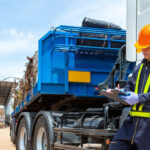In today’s era of sustainability and environmental consciousness, the process of converting waste into wealth has become an integral part of resource management. One such transformative journey is witnessed in the realm of scrap metal recycling. Through innovative practices and technological advancements, the recycling industry has evolved into a lucrative sector, breathing new life into discarded metal waste. Go through the remarkable journey of scrap metal recycling, exploring its significance, process, and the economic and environmental benefits it brings.
The Significance of Scrap Metal Recycling:
Scrap metal recycling plays a vital role in conserving valuable resources, reducing energy consumption, and minimizing environmental impact. Metals like copper, iron, stainless steel, and brass possess inherent recyclability, making them ideal candidates for recycling. By diverting these metals from landfills and reintegrating them into the manufacturing process, we can significantly decrease the need for raw materials extraction and conserve energy.
The Process of Scrap Metal Recycling:
Scrap metal recycling involves a well-defined process that encompasses collection, sorting, processing, and refining. It begins at scrap metal yards, where various sources of metal waste are gathered. The collected materials undergo meticulous sorting based on their type and composition to maximize recycling efficiency. Advanced technologies, such as shredders and magnetic separators, aid in the separation of ferrous and non-ferrous metals. These metals are then processed through melting, purification, and shaping, transforming them into high-quality raw materials for industries.
Economic Benefits and Current Metal Prices:
Scrap metal recycling offers substantial economic benefits. It creates employment opportunities across the recycling value chain, from collection to processing and manufacturing. Additionally, by recycling metal waste, industries can reduce their production costs as compared to using virgin materials. The demand for recycled metals influences the current metal prices, which fluctuate based on market conditions, global supply and demand, and the overall economic landscape. Key metals like copper, stainless steel, and brass have their respective scrap prices that are determined by market dynamics and the purity of the recycled metal.
Environmental Impact and Sustainability:
The environmental impact of scrap metal recycling cannot be understated. By recycling metal waste, the industry significantly reduces the need for mining and extraction, conserving natural resources and minimizing habitat destruction. Moreover, recycling metals requires less energy compared to extracting and refining virgin metals, resulting in reduced greenhouse gas emissions and a smaller carbon footprint. The sustainable practices of scrap metal recycling align with the goals of a circular economy, where materials are kept in circulation and waste is minimized.
Conclusion:
From waste to wealth, the transformative journey of scrap metal recycling offers immense economic and environmental benefits. Through the efficient collection, sorting, and processing of metal waste, industries can obtain high-quality raw materials while reducing the strain on natural resources. By embracing recycling practices and recognizing the value of scrap metal, we contribute to a more sustainable future. With the current metal prices reflecting market dynamics, scrap metal recycling stands as a testament to the power of innovation and responsible resource management.As the saying goes, “Where there’s waste, there’s opportunity.” This proverb aptly captures the essence of the transformative journey of scrap metal recycling, where discarded waste is transformed into valuable resources, benefitting both the economy and the environment. Start your journey of scrap recycling in Qatar with Habari Engineering.



